As a homeowner, maintaining a pest-free environment is of utmost importance for the well-being of residents and the property itself. There are many different types of pests and bugs that can infest a home, both inside and outside.
From common pests like ants and cockroaches to more dangerous threats like rodents and termites, it’s essential to be proactive in pest prevention and control. Neglecting these measures can lead to health risks, property damage, and financial implications.
In this article, we’ll provide an overview of the different types of pests and bugs that can invade your home and the steps you can take to protect both the interior and exterior of your property. Whether it’s proper sanitation, regular maintenance, or professional assistance, we’ll cover everything you need to know about pest control.
Key Takeaways
- A pest-free environment is crucial for the well-being of residents and the property itself.
- Common pests found in and around homes include ants, cockroaches, rodents, and termites.
- Proper sanitation, regular maintenance, and professional assistance can all help prevent pest infestations.
- Neglecting pest prevention measures can lead to health risks, property damage, and financial implications.
- Stay proactive and take steps to protect both the interior and exterior of your home from unwanted pests and bugs.
Common Pests and Bugs Found in and around Homes
Homeowners often encounter a variety of pests and bugs in and around their homes, both inside and outside. These pests not only cause damage to the property but also pose significant health risks to the residents.
Indoor Pests and Bugs
Indoor pests and bugs include rodents, cockroaches, ants, termites, bed bugs, and flies. These pests can enter homes through cracks, crevices, and open doors or windows. In addition to causing property damage, indoor pests can spread diseases, trigger allergies, and cause respiratory problems. To prevent indoor pests, homeowners should maintain proper sanitation by disposing of garbage regularly and keeping kitchens and bathrooms clean. Sealing cracks and crevices and using natural remedies or pesticides can also keep pests at bay.
Outdoor Pests and Bugs
Outdoor pests and bugs include mosquitoes, ticks, wasps, bees, and spiders. These pests can cause damage to plants and landscaping while also posing health risks to residents through bites or stings. Preventing outdoor pests requires regular maintenance, including cleaning gutters, trimming trees and bushes, and removing debris and standing water. Using barriers or traps and keeping doors and windows closed can also help keep pests out of the home.
Termite Infestations
Termites can cause significant damage to the structure of the home, making them a particularly challenging pest to deal with. Signs of termite damage include sagging floors, hollow-sounding wood, and maze-like patterns in walls or furniture. Homeowners should conduct regular inspections and seek professional assistance if they suspect a termite infestation. Prevention measures include keeping woodpiles away from the home and keeping the area around the foundation dry and well-ventilated.
The Consequences of Neglecting Pest Prevention
Neglecting pest and bug prevention measures can result in severe consequences for homeowners. Health risks, property damage, and costly treatments can all result from unchecked infestations. It is crucial to be proactive about pest prevention to avoid these unwanted outcomes.
Preventing Indoor Pests and Bugs
Insects and pests are ubiquitous, and unfortunately, it is easy for them to make their way into your home. Proper sanitation and upkeep can greatly reduce the risk of an infestation.
One way to prevent pests around home is to keep your kitchen clean and free of food debris. Food left on counters or improperly stored can attract pests like ants, cockroaches, and rodents. Store food in airtight containers, promptly clean up spills, and take out the trash regularly.
Using natural remedies or pesticides can also help keep pests at bay. Essential oils like peppermint, eucalyptus, and tea tree oil can be used as natural repellents, while bug sprays can help eliminate an existing infestation.
Additionally, sealing cracks and crevices around windows, doors, and other entry points can prevent pests from entering your home. Leaky pipes or faucets should be repaired promptly as pests like silverfish and roaches are attracted to moisture.
Tip: Always be sure to read and follow the label directions on any pest control products.
Common Indoor Pests and How to Prevent Them
Below is a table highlighting common indoor pests and how to prevent them.
| Pest | Prevention Measures |
|---|---|
| Cockroaches | Proper sanitation, sealing cracks and crevices, using pesticides or natural repellents, and eliminating moisture sources. |
| Ants | Storing food properly, sealing entry points, and keeping your home clean and dry. |
| Spiders | Vacuuming regularly, removing webs, and sealing cracks and crevices. |
| Bedbugs | Regularly checking for signs of infestation, keeping your home clean and clutter-free, and using mattress encasements. |
By taking the necessary steps to prevent indoor pests and bugs, homeowners can protect themselves and their homes from infestations and costly repairs. Be proactive and take preventive measures to keep your property safe and pest-free.
Protecting the Exterior of Your Home from Pests and Bugs.
The exterior of your home is just as susceptible to pest and bug infestations as the inside. In fact, many pests and bugs, such as ants, termites, and mice, can cause just as much damage to the outside of your home as they can the inside. This section will cover effective strategies for keeping pests and bugs at bay and protecting the exterior of your home.

Regular Maintenance
Regular maintenance is crucial to keeping pests and bugs away from your home. Proper landscaping, trimming trees and shrubs away from the house, and eliminating standing water are all important steps to take. Clearing debris, such as piles of leaves or branches, from your yard can also help prevent pests and bugs from making themselves at home outside. Regular inspections of the exterior of your home can help you identify any potential problem areas before they become an issue.
Barriers and Traps
Using barriers and traps can be an effective way to prevent pests and bugs from getting into your home. Installing screens on windows and doors, sealing cracks and crevices, and using weatherstripping can all help keep pests out. For larger pests, such as rodents, using bait stations or snap traps can be effective. Using sticky traps or pheromone-based traps can help capture smaller insects, such as ants and flies.
Professional Pest Control Services
While there are many steps homeowners can take to prevent and control pests and bugs around their homes, sometimes it’s necessary to call in the professionals. A pest control service can provide expert knowledge and effective solutions to keep your home pest-free. They can also help identify and eliminate any existing infestations, ensuring the safety and wellbeing of your household.
Final Thoughts
Preventing and controlling pests and bugs around your home isn’t just about keeping your property looking clean and well-maintained. It’s also necessary to protect the health and safety of your family. By taking the steps outlined in this section, you can safeguard your home from the potential problems associated with pest and bug infestations.
Termite Prevention and Control Measures
Termites can wreak havoc on a home’s foundation and cause significant structural damage that may be costly to repair. Homeowners should take preventative measures to avoid a termite infestation. Regular inspections by a pest control specialist can detect early signs of termite damage and prevent an infestation from spreading.
Some common signs of termite damage include:
- Hollow or damaged wood
- Swarmers or discarded wings
- Mud tubes on exterior walls or foundation
Homeowners can take preventative measures to protect against termites, including:
- Eliminating moisture by fixing leaks and improving ventilation
- Replacing decaying or moisture-damaged wood
- Sealing cracks and crevices in the foundation or exterior walls to prevent easy access
If a termite infestation is detected, it’s important to take immediate action to prevent further damage to the home. Professional treatment options, such as liquid termiticides or baits, may be necessary to eradicate the infestation completely.
Remember, prevention is key when it comes to termites. Taking proactive measures to protect your home can save you time, money, and stress in the future.
The Consequences of Neglecting Pest and Bug Prevention
Homeowners who neglect pest and bug prevention measures may face serious consequences. Not only can pests and bugs cause damage to property, but they can also pose health risks to residents.
Health Risks
Pests and bugs can carry harmful bacteria and allergens that can cause a range of health problems for residents. For example, cockroaches can trigger asthma attacks, while rodents can spread diseases such as salmonella and hantavirus. Mosquitoes, ticks, and fleas can also transmit a range of diseases.
Property Damage
Pests and bugs can also cause damage to the property. For example, termites can destroy wooden structures, while rodents can chew through wires and insulation, creating a fire hazard. Bed bugs can infest mattresses, causing costly replacements. It is important to address pest and bug problems as soon as they arise to prevent costly damage.
Financial Implications
Dealing with a pest or bug infestation can be costly. Homeowners may need to hire professional pest control services to eradicate the infestation, which can be expensive. In addition, if the property has sustained damage due to the infestation, homeowners may need to pay for repairs or replacements out of pocket. Regular inspections and simple prevention measures can save homeowners a lot of money in the long run.
| Pests and Bugs | Potential Consequences |
|---|---|
| Cockroaches | Allergies, asthma attacks, food contamination |
| Termites | Wood damage, structural damage |
| Rodents | Fire hazard, property damage, health risks |
| Bed Bugs | Costly mattress replacements, anxiety and stress |
| Mosquitoes, Ticks, Fleas | Diseases transmission such as malaria, Lyme disease, and plague |
Homeowners should take pest and bug prevention seriously to avoid these potential consequences. Regular inspections, proper sanitation, sealing up holes and gaps, and enlisting the services of a professional pest control company can all go a long way in keeping pests and bugs out of the home.
Conclusion
In conclusion, protecting your home from unwanted pests and bugs is essential for maintaining a safe and healthy environment for you and your family. By taking proactive measures to prevent pests and bugs, you can avoid potential property damage, health risks, and financial implications.
It is essential to be aware of the different types of pests and bugs that can infest your home, both inside and outside. Proper sanitation, sealing cracks and crevices, and using natural remedies or pesticides are effective ways to prevent indoor pests and bugs. Regular maintenance, proper landscaping, clearing debris, and using barriers or traps are key strategies for protecting the exterior of your home from pests and bugs.
Termite infestations are a specific issue that requires prevention and control measures. Homeowners should be aware of signs of termite damage, schedule regular inspections, and seek professional assistance if necessary.
Neglecting pest and bug prevention measures can lead to significant problems. Health risks, property damage, and financial implications can result from pest infestations. Therefore, it is crucial to be proactive in inspecting and preventing pests and bugs.
Take the necessary steps to protect your home from pests and bugs today for the well-being of you and your family. A pest-free environment provides peace of mind and a healthy living space.
FAQ
How can I prevent pests from infesting my home?
There are several steps you can take to prevent pests from infesting your home. Start by keeping your home clean and well-maintained, as pests are attracted to food residue and clutter. Seal cracks and crevices to prevent pests from entering, and use natural remedies or pesticides as necessary. Regularly inspect and maintain the exterior of your home to create a barrier against pests.
What are some common pests and bugs found in and around homes?
Common pests and bugs found in and around homes include ants, cockroaches, mosquitoes, flies, bedbugs, termites, rodents, and spiders. These pests can cause damage to your property and pose health risks to you and your family.
How can I prevent indoor pests and bugs?
To prevent indoor pests and bugs, practice good sanitation by keeping your home clean, storing food properly, and promptly disposing of garbage. Seal cracks and crevices with caulk or weatherstripping, and use natural remedies or pesticides as needed. Regularly clean and maintain your indoor appliances to eliminate hiding places for pests.
How can I protect the exterior of my home from pests and bugs?
Protecting the exterior of your home from pests and bugs involves regular maintenance. Keep your yard tidy by trimming shrubs and trees, clearing debris, and maintaining proper drainage. Use barriers such as screens or mesh to prevent pests from entering your home. Set up traps or call a professional pest control service if pests become a recurring issue.
What can I do to prevent termite infestations?
To prevent termite infestations, conduct regular inspections to look for signs of termite damage, such as mud tubes or discarded wings. Keep your home dry by fixing leaks and addressing moisture issues. Remove any wood-to-soil contact around your home, and consider using termite-resistant materials during construction or renovation. If you suspect a termite infestation, contact a professional for treatment options.
What are the consequences of neglecting pest and bug prevention?
Neglecting pest and bug prevention can have serious consequences. Pest infestations can lead to health risks, such as allergies and diseases transmitted by pests. Pests can also cause damage to your property, including structural damage, damage to belongings, and contamination of food. Dealing with a pest infestation can be costly and time-consuming, so it is important to take proactive measures to prevent them.

